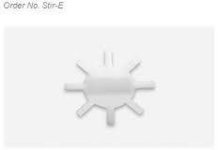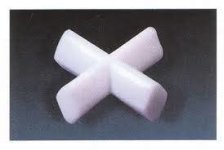ॐ
Psilosopher
Hi fellow Nexians,
I bought myself a magnetic stirrer / hotplate recently, along with a 2L Erlenmeyer flask which I was planning on using as an extraction vessel, and a number of different size stir bars.
I've tested it out quickly, but noticed that it was not evident to stir 2 liters of fluid, even with the largest stir bar (9x70mm). I can only stir this much fluid on the lowest speeds, producing a very small vortex of barely 1.5-2cm, otherwise the stir bar just goes flying.
Using a 0.5L Erlenmeyer I could create a large vortex with ease. I also have a 1L glass beaker which I haven't yet tried but presumably would also draw a fairly decent vortex.
I have a few questions:
1. How much of a vortex do you really need to properly mix the naphtha and base soup?
I presume you would want one that sucks in 90% of the naptha, leaving just a small film on the surface?
2. Can you use more powerful magnetic stir bars to draw a larger vortex in a higher volume of liquid?
The ones I am using right now are off-brand teflon coated stir bars. I have read that neodymium stir bars are a lot more powerful than most other:
Seems like this would be my solution?
I bought myself a magnetic stirrer / hotplate recently, along with a 2L Erlenmeyer flask which I was planning on using as an extraction vessel, and a number of different size stir bars.
I've tested it out quickly, but noticed that it was not evident to stir 2 liters of fluid, even with the largest stir bar (9x70mm). I can only stir this much fluid on the lowest speeds, producing a very small vortex of barely 1.5-2cm, otherwise the stir bar just goes flying.
Using a 0.5L Erlenmeyer I could create a large vortex with ease. I also have a 1L glass beaker which I haven't yet tried but presumably would also draw a fairly decent vortex.
I have a few questions:
1. How much of a vortex do you really need to properly mix the naphtha and base soup?
I presume you would want one that sucks in 90% of the naptha, leaving just a small film on the surface?
2. Can you use more powerful magnetic stir bars to draw a larger vortex in a higher volume of liquid?
The ones I am using right now are off-brand teflon coated stir bars. I have read that neodymium stir bars are a lot more powerful than most other:
Many stir bars are made with ceramic or Alnico magnets. Ceramic magnets are inexpensive and common, but not nearly as strong as a neodymium magnet. They have only about 8-10% of the pull force.
Alnico magnets are made from aluminum, nickel and cobalt. They are stronger than ceramic magnets, about 25% of the strength of a neodymium magnet of the same size. They have been commonly used for stir bars, especially for high temperature use. The downside is that Alnico magnets have very low coercivity, meaning they are easiest to demagnetize. If exposed to a strong magnetic field, they can become weaker. They are often sold in pairs to avoid this, though they can lose strength through mishandling.
Neodymium magnets are stronger than ceramic and Alnico magnets, and have the highest coercivity of all permanent magnet types. If you keep the temperatures of these N42H grade Stir Bar Magnets below 248°F (120°C), they should retain their magnetization practically indefinitely
Seems like this would be my solution?



